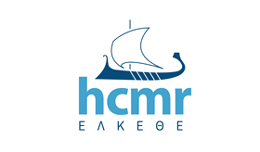MARIS
Type of resources
Available actions
Topics
Keywords
Contact for the resource
Provided by
Years
Formats
Representation types
status
Service types
Scale
Resolution
-

Data access will be provided in near real time and in delayed mode. Parameters include salinity, temperature, chlorophyll fluorescence, turbidity, oxygen, pH, pCO2, wave height and direction, current speed and direction and also in air data on temperature, irradiation and air pressure. Also data from laboratory analyses of water samples are included, e.g. chlorophyll, salinity, CDOM, coloured dissolved organic matter, phytoplankton abundance and biodiversity. Data is distributed through the Baltic Operational Oceanographic System, BOOS and through the Swedish Oceanographic Data Centre at SMHI. Data is accessible through download and through web services. Data and metadata is delivered through SMHI systems for distributing oceanographic data, e.g. http://sharkdata.smhi.se according to EU standards and procedures.
-

POSEIDON is an operational marine monitoring, forecasting and information system for the Greek Seas. The observing component is a distributed infrastructure made by three coastal buoys (Saronikos buoy-SB, Heraklion Coastal Buoy-HCB and Athos buoy-AB) and one FerryBox (PFB). A calibration laboratory (see Chapter 2) is supporting the observing activities. The Athos buoy is equipped with meteo sensors and T, C/S, DO, fluorescence and turbidity sensors up to 100m in depth, is located in the coastal area in the Northern Aegean, representative of mesotrophic to oligotrophic conditions affected by circulation. Although coastal the depth of the water column allows deeper observations.
-
WMS for EMODNet HRSM CDI services by SeaDataNet
-
WFS for EMODNet HRSM CDI services by SeaDataNet
-
WMS/WFS services for marine chemical datasets used in EMODNet Chemistry and provided by SeaDataNet. The data distribution is managed by the Common Data Index (CDI) Data Discovery and Access service. The service offers layers based on the chemical observations in CDI as grouped per vocabulary P36.
-
WMS/WFS services for marine chemical datasets used in EMODNet Chemistry and provided by SeaDataNet. The data distribution is managed by the Common Data Index (CDI) Data Discovery and Access service
-
WMS/WFS services for marine chemical datasets used in EMODNet Chemistry and provided by SeaDataNet. The data distribution is managed by the Common Data Index (CDI) Data Discovery and Access service
-
WMS/WFS services for marine chemical datasets used in EMODNet Chemistry and provided by SeaDataNet. The data distribution is managed by the Common Data Index (CDI) Data Discovery and Access service. The service offers layers based on the chemical observations in CDI as grouped per vocabulary P36.
-
This tool will visualise data collected during surveys and research cruises with the RV Cefas Endeavour focusing on chlorophyll a and phytoplankton functional types. It will make the link between the in-situ measurement and the Earth Observation and modelling and will develop the combined data set approach for the descriptors 1, 4, and 5 for MSFD. Primarily, developed in R shiny, with a tab for exploring each dataset, and a front page where datasets can be visualised concurrently, the tool will propose products using the outputs from the different approaches and will be included in the products and services Cefas portfolio.
-
Sediment Profile Images (SPIs) are commonly used to map physical, biological and chemical/nutrient gradients in benthic habitats. SpiArcBase is a software that has been developed for the analysis of Sediment Profile Images (SPIs). It has been conceived to improve the objectivity of extracted information (especially the apparent Redox Potential Discontinuity (aRPD). The software presents a graphical user interface designed to enhance the interpretation of features observed on SPIs in an objective manner and to facilitate image management and structures visualization via a data base.The software also allows for the storage of generated data and the automatic computation of a benthic habitat quality index. The facilities provided within JERICONext include access to the software through free downloading and assistance in its utilization.
 Catalogue PIGMA
Catalogue PIGMA